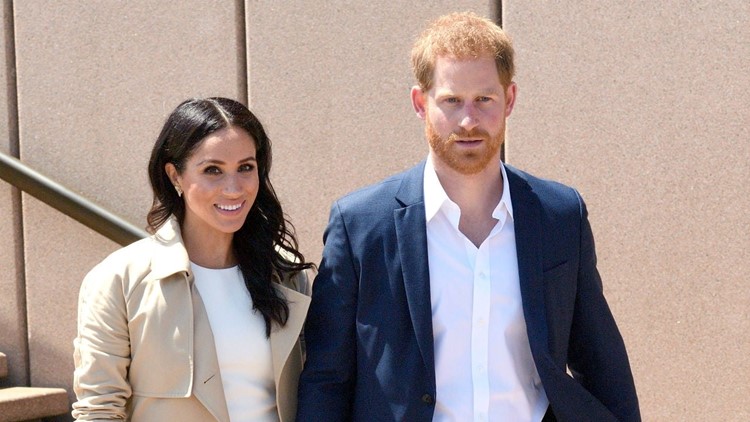How Meghan Markle Is the Flea in the Ointment of the Royal Family | What Just Happened?

For centuries, the British Royal Family has been a symbol of tradition, continuity, and a carefully curated public image. Yet in the last few years, this image has been shaken by the presence of one figure who seems to generate as much fascination as she does controversy: Meghan Markle, Duchess of Sussex. To her supporters, she is a modern woman unfairly vilified by the establishment and the media. To her critics, she is the disruptive “flea in the ointment,” whose very presence threatens the smooth machinery of the monarchy. What just happened—and why does Meghan Markle remain at the center of such a storm?
A Royal Fairytale Turns Sour

When Prince Harry announced his engagement to Meghan Markle in 2017, the news was greeted with widespread celebration. Meghan represented something fresh: a biracial, American actress who appeared confident, independent, and charismatic. The royal institution, often accused of being outdated, seemed to gain a new spark. For a moment, it felt as though the monarchy was ready to adapt to a modern, multicultural Britain.
But the honeymoon period quickly ended. Media coverage, initially glowing, turned critical. From her fashion choices to her family background, Meghan faced scrutiny that at times bordered on hostile. Headlines dissected her every move, often painting her as demanding or manipulative. The tabloid frenzy became relentless, and in the eyes of many, it crossed a line into racial undertones and unfair stereotyping.
The Rift Within the Family

What makes Meghan such a disruptive force is not simply her strained relationship with the press but her alleged impact on the royal household itself. Reports of tensions between Meghan and members of the family—particularly Catherine, the Princess of Wales—fed rumors of conflict. Behind palace walls, whispers of disagreements over protocol, staff management, and royal duties painted a picture of a family struggling to accommodate an outsider who was unwilling to “play by the rules.”
Prince Harry’s fierce defense of his wife deepened the divide. Once famously close to his brother Prince William, Harry seemed to drift further apart as he sought to shield Meghan from the same scrutiny he believed had destroyed his mother, Princess Diana. The Sussexes’ decision in 2020 to step back from royal duties and relocate to the United States—dubbed “Megxit”—marked a turning point. No longer bound by palace control, the couple spoke openly about their grievances, shocking the world with accusations of neglect and racism within the institution.
The Media Machine and Public Perception

If Meghan is the “flea in the ointment,” then much of that label stems from the way she disrupts the royal narrative so carefully maintained by Buckingham Palace. Royals are expected to remain silent, to embody duty above all else, and to accept the weight of tradition. Meghan, however, brought with her a Hollywood sensibility: the willingness to tell her side of the story, to break the silence, and to frame herself and Harry as protagonists in a drama of liberation versus oppression.
Her interviews, particularly with Oprah Winfrey in 2021, cast the monarchy in an unflattering light. For supporters, Meghan’s candidness was a brave step, shedding light on outdated practices and hidden prejudices. For detractors, it was a betrayal—an act of disloyalty that undermined an institution already under immense pressure.
The Symbolism of Meghan Markle
At the heart of the debate lies symbolism. Meghan is not just a person; she represents a clash of values. On one side stands the monarchy, steeped in centuries-old tradition, ceremony, and quiet stoicism. On the other side stands Meghan, embodying modern ideals of self-expression, diversity, and individual freedom. The friction between these two forces was perhaps inevitable.
Critics argue that Meghan underestimated the gravity of her role and sought to reshape the monarchy in her image. Admirers counter that she revealed the rigidity and lack of compassion within an institution unwilling to evolve. Either way, Meghan Markle forces the Royal Family—and the public—to confront uncomfortable questions about race, privilege, mental health, and the relevance of monarchy in the 21st century.
What Just Happened—and What Comes Next?
The latest chapters in the saga—ranging from ongoing legal battles with British tabloids to the couple’s evolving media ventures—suggest that Meghan is not retreating quietly into private life. Instead, she and Harry continue to shape their narrative, producing documentaries, podcasts, and philanthropic projects that keep them firmly in the public eye.
For the Royal Family, this means the “flea in the ointment” remains present, even across the Atlantic. Every public statement, every project, every appearance by the Sussexes is weighed against the image the Palace tries to maintain. And while the monarchy has weathered countless storms over the centuries, the Meghan factor is unique in its global reach, amplified by modern media and fueled by cultural debates that resonate far beyond the UK.
Conclusion
To call Meghan Markle the “flea in the ointment” is both a critique and a recognition of her undeniable impact. She has disrupted the smooth surface of royal tradition, forcing fractures into the open and challenging the public to reconsider its relationship with monarchy. Whether one sees her as a courageous truth-teller or a disruptive outsider, the reality is that Meghan Markle has left a mark that cannot be ignored.
What just happened is simple yet profound: a centuries-old institution collided with a woman who refused to be silent. And the reverberations of that collision are still unfolding.